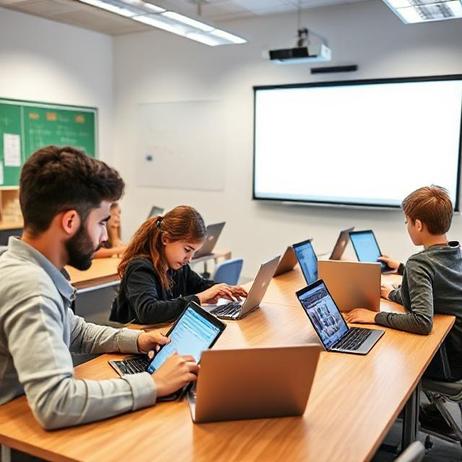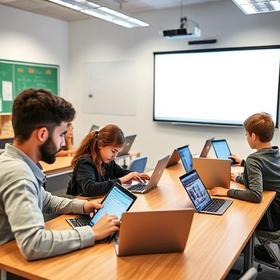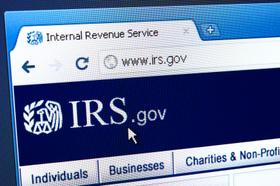Technology in Private Schools: 2025 Insights
In 2025, technology in private schools is no longer simply an add-on—it is central to institutional strategy, pedagogy, campus operations and student wellbeing. For families, educators and administrators considering or working in private school contexts, understanding how technology is being deployed, regulated and leveraged provides critical insight. This article offers an updated look at technology in private schools—drawing on recent data, expert commentary, best practices and real-world examples of innovation and challenge.
The Landscape: Private Schools and Technology
Private schools in the U.S. enroll approximately 5.47 million students, representing roughly 10 per cent of K–12 enrolment.The sector comprises around 29,730 schools nationwide.
As private schools contend with rising tuition, tight budgets (industry revenue estimated at ~$79.3 billion in 2025) and growing competition, technology is rapidly seen as a differentiator.
At the same time, technology in private schools means more than devices—it means orchestration of infrastructure, data governance, pedagogy, student support and digital citizenship. Recent research shows that 59 per cent of independent and private K–12 schools are exploring generative-AI or adaptive-learning tools in some form.
And according to an EdTech Magazine article, major concerns for schools include student data privacy, the use of generative AI, and school-safety technology.
In short, the role of technology in private schools in 2025 is far more strategic than it has been in the past.
Why It Matters for Families and Educators
For prospective parents and students, understanding how a school uses technology reveals much about its educational philosophy, readiness for the future, and support infrastructure. A school that simply provides tablets, for instance, isn’t the same as one that embeds adaptive-learning platforms, supports digital wellbeing, and leverages analytics to personalise instruction.
For educators and school leaders, technology is no longer optional—it is integral to curriculum delivery, teacher support, campus management and student experience. A robust technology ecosystem in a private school supports:
Personalised learning pathways
Enhanced collaboration (student–student, student–teacher, global)
Real-world skill development (coding, design, data literacy)
Operational efficiency (scheduling, safety, resource allocation)
Digital wellness and equitable access
Key Trends in 2025
Below are five key trends shaping how technology in private schools is evolving.
1. AI and Adaptive Learning Platforms
In 2025, many private schools incorporate AI-driven systems: personalising instruction, analyzing student work, and freeing teachers for higher-level facilitation. One report found 59 per cent of private/independent schools are exploring AI in some form.veracross.com
A separate data set shows that about 86 per cent of students worldwide use multiple AI tools in education settings, and 54 per cent use them weekly.
For example: the emerging model of the Alpha Schools network (private K-8) uses two-hour core academic blocks powered by adaptive apps and AI/tutor-like platforms. Tuition starts at ~$40,000 or higher.
Take-away for families: When evaluating a private school, ask how AI and adaptive tools are used—Are they replacing teachers, or complementing them? How is student data used? What safeguards are in place?
For educators: Ensure that AI platforms are integrated thoughtfully, with teacher training, clear governance and institutional buy-in—not simply purchased as a one-off.
2. Digital Wellness, Balance & Screen-Time Policies
As technology use grows, schools are increasingly mindful of the potential downsides: distraction, mental-health impact, inequity and over-reliance on screens. According to EdTech Magazine, one of the top concerns for independent/private schools is student data privacy—but equally relevant is digital wellbeing.edtechmagazine.com
Some schools are now implementing digital-wellness curricula and deliberate “device-down” strategies. While much of the early discussion was in public schools, many private schools manage these issues proactively.
Insight: Families should ask: What are the school’s policies on screen time, mobile-device use, and digital citizenship? How is student access managed?
Educator angle: Develop a comprehensive digital-wellness plan: device-management policy, training on digital citizenship, student/parent education on healthy screen use.
3. Infrastructure, Cybersecurity & Data Governance
With more devices, cloud platforms, data systems and connected campuses, infrastructure and>Ask: How much redundancy, managed solutions, endpoint detection, firewall and vendor-managed services does the school deploy? Are parents and students aware of the>Tip for schools: Partner with managed-services providers for cybersecurity, establish clear style="line-height:1.38;margin-top:12pt;margin-bottom:2pt;">4. STEM/STEAM Integration & Real-World Skills
Technology in private schools extends beyond “devices in the classroom” to embedding STEM/STEAM pathways and real-world skill development (coding, data analytics, robotics, design thinking).
While full longitudinal data for private schools specifically is limited, studies of K–12 computer-science participation show modest growth in CS enrolment.arXiv
Private schools that emphasise technology often build specialised labs, maker-spaces, robotics teams, and partnerships with industry.
For families: Ask what pathways exist: Are there dedicated CS/AP CS courses? How often do students engage in project-based work involving real-world tools?
For schools: Ensure technology is linked to pedagogy—not a “computer class” only—but embedded throughout curriculum, cross-discipline.
5. Equity, Access and the Digital Divide
Even among private schools, technology use must be mindful of equity—within the student body, and between schools. A school may adopt high-tech tools, but if a subset of students lacks reliable home-connectivity or devices, the benefits can be uneven.
Recent efficiency-studies in Latin America showed that private schools had advantages in technology-stock at home, autonomy, and fewer outside paid-work responsibilities for students.
Families should ask: Does the school provide loaner devices? Has it assessed home-connectivity disparities? What supports exist for students who may start behind?
Schools should: Provide device-loan programmes, run digital-access audits, partner with connectivity providers, ensure use of technology complements rather than replaces human support.
Tuition, Budgeting and Resource Allocation
Technology in private schools often has tuition and budgeting implications. While average tuition varies widely, the rising cost of tech and innovation is a factor.
Data show that private day/middle-school tuition in the U.S. can run into tens of thousands of dollars annually, depending on region, boarding status, and school prestige.Research.com
Consider the case of the AI-first Alpha Schools: tuition starts around $40,000 and may rise to $65,000 depending on location and grade.
For schools, budgeting must allocate for: network infrastructure, devices (laptops/tablets), software licences (AI/analytics), cybersecurity, professional development, and ongoing device lifecycle replacement.
Advice for families: When comparing private schools, inquire how technology is included in tuition or fees, what device-expectations exist (BYOD vs school-owned), and whether upgrades will require additional charges.
Advice for school leaders: Balance high-end technology investment with sustainability—avoid one-off gadget purchases without long-term support and training. Consider partnerships, phased upgrades, and enterprise-grade contracts.
Real-World Example: Private School Technology in Action
Consider a mid-sized suburban independent day school that launched a 1:1 laptop programme, established a maker-space with 3-D printers and robotics labs, rolled out an adaptive-learning platform tied to diagnostics, and implemented digital-wellness lessons starting K–12. Teachers use dashboards to monitor student progress, and morning homeroom includes a 10-minute “digital check-in” where students reflect on their device use and goals for the day. At the same time, the school maintained daily face-to-face small-group work, weekly “device-free” learning sessions, and parent training nights on cyber-safety and digital footprints. This blend of high technology and human support embodies the best of “technology in private schools” in 2025.
Families saw tangible benefits: improved differentiated support for learners (both above and below grade level); stronger student agency in learning; and a sense of readiness for college/university expectations around>Educators reported fewer rote lessons, more meaningful analytics informing instruction, and better alignment between technology-tools and outcomes. The school also budgeted for device-renewal every 4 years, and included a maintenance-pool so that no student was without functioning hardware. Importantly, the school tracked digital-access equity: connectivity surveys for families, weekend loaner-hotspots, and volunteer-led “tech coaches” for students needing extra support.
Challenges and Considerations
Even as technology in private schools advances, several caution-points remain:
Over-reliance on technology. Tools are enablers, not substitutes for strong teaching. If an AI system is used merely as a replacement rather than a complement, depth of learning may suffer.
Data privacy and ethical use. Schools must ensure student data is safeguarded, analytics are used ethically, and families understand how their children’s information is used.
Teacher readiness and professional development. Technology only delivers value when teachers are confident, trained and supported. A hardware-investment without PD will not yield results.
Equity of access. Even in independent/private schools, home connectivity, device-share, and student-digital literacy vary. Schools must proactively address this.
Cost sustainability. Device refresh cycles, software licences, support staffing and cybersecurity incur recurring costs—schools must budget accordingly.
Digital-wellness and human connection. Technology should enhance—but not replace—the human relationships central to effective schooling. Many schools now intentionally embed device-free time, student-reflection on screen-use, and social-emotional programming.
What Families Should Ask and What Schools Should Do
For families evaluating a private school:
How is technology integrated in the day-to-day (rather than just “we have tablets”)?
What devices will my child use? Who owns them? What is the refresh cycle?
What training do teachers receive? How is pedagogy aligned with technology use?
What are the school’s policies on digital-wellness, screen-time, mobile-device use and digital citizenship?
How does the school support students who may not have strong digital access at home?
How is student data used? What privacy protections are in place?
How much of the technology cost is included in tuition or fees? Are there hidden charges?
For school leaders and administrators:
Develop a clear technology-vision aligned to institutional mission—not simply gadgets.
Establish long-term budgeting for device refresh, software licences, infrastructure, cybersecurity and PD.
Embed professional development into technology rollout and refresh cycles.
Integrate digital-wellness, digital citizenship and equity of access into policy and practice.
Monitor outcomes—not just device-counts—but how technology improves pedagogy, student agency and readiness for a digital world.
Communicate transparently with parents and students about how technology is used, governed, refreshed and secured.
Looking Ahead
Technology in private schools in 2025 is accelerating—with AI, adaptive platforms, robust infrastructure and digital-wellness at the forefront. As the sector evolves, schools that prioritise thoughtful integration (rather than novelty) will offer stronger value to students and families. For families, understanding how technology is embedded in a school’s culture, budget and pedagogy is now a key quality indicator of a 21st-century private school.
For example: the private‐school market brief notes that as school choice expands and private-school operators invest in technology, the value proposition of independent schools will increasingly rest on how well they use technology—not just whether they have it.Marketbrief















